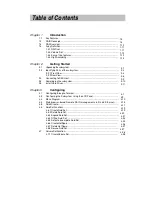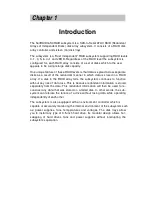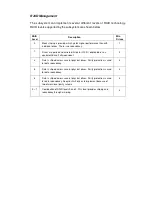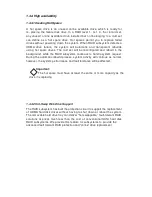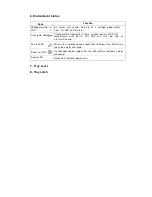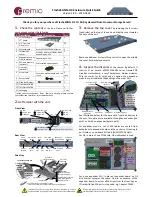
1.4.2 Volume Set
A Volume Set is seen by the host system as a single logical device. It is
organized in a RAID level with one or more physical disks. RAID level refers
to the level of data performance and protection of a Volume Set. A Volume
Set capacity can consume all or a portion of the disk capacity available in a
RAID Set. Multiple Volume Sets can exist on a group of disks in a RAID Set.
Additional Volume Sets created in a specified RAID Set will reside on all the
physical disks in the RAID Set. Thus each Volume Set on the RAID Set will
have its data spread evenly across all the disks in the RAID Set. Volume Sets
of different RAID levels may coexist on the same RAID Set.
In the illustration below, Volume 1 can be assigned a RAID 5 level of operation
while Volume 0 might be assigned a RAID 0+1 level of operation.
1.4.3 Easy of Use features
1.4.3.1 Instant Availability/Background Initialization
RAID 0 and RAID 1 volume set can be used immediately after the creation. But
the RAID 3, 5 and 6 volume sets must be initialized to generate the parity. In
the Normal Initialization, the initialization proceeds as a background task, the
volume set is fully accessible for system reads and writes. The operating sys-
tem can instantly access to the newly created arrays without requiring a reboot
and waiting the initialization complete. Furthermore, the RAID volume set is
also protected against a single disk failure while initialing. In Fast Initialization,
the initialization proceeds must be completed before the volume set ready for
system accesses.


